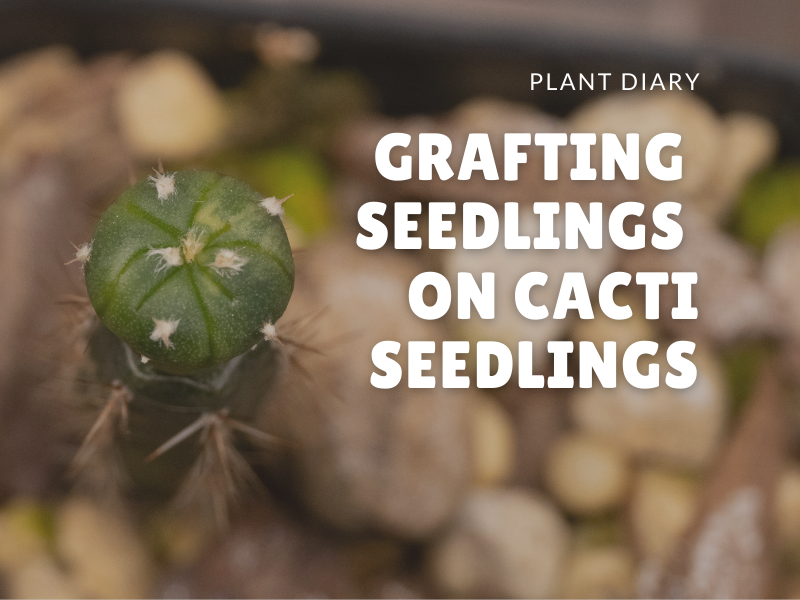Wait what? Seedling on seedling? You might be thinking why I would want to do that. The past few months in Singapore have been really wet and humid. A series of grafting failures spurred me to try out other ways to graft that might help to improve success rates for really young astrophytum seedlings.
Here are some photos of my successful experiments that were grafted around four weeks ago. I pick them randomly from a bunch of seeds from Thailand that I sow. I was really lucky and picked a variegated one on the left. 😜
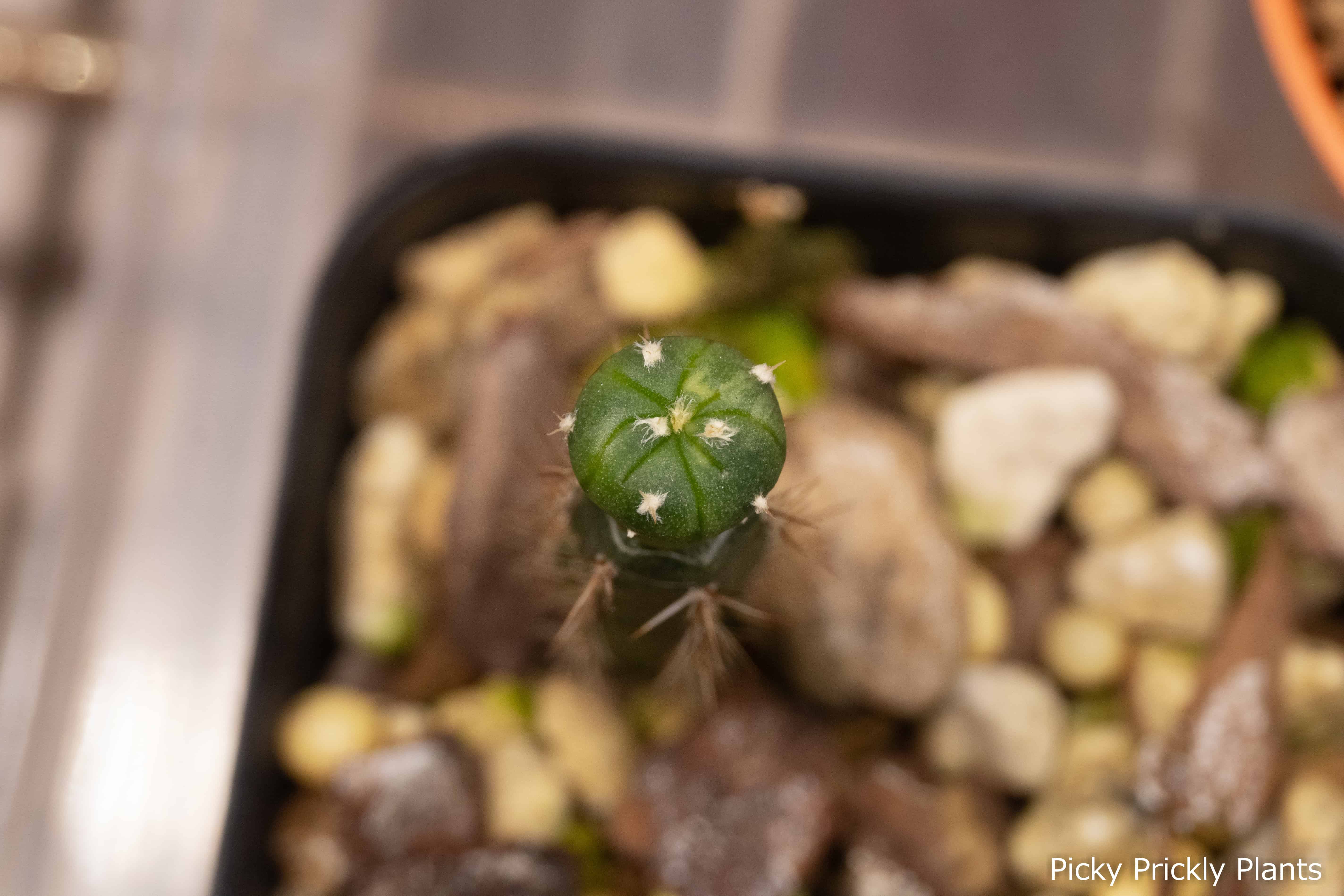

The Myriostigma seedling on the right started off looking really similar to a Asterias seedling. However, after grafting it, the thing you see now burst through the middle to form this really speckled plant.
With these two successes in my pocket, I’m confident to document what I did and also try a few more experiments.
Pick a rootstock that has established
First of all, I chose the rootstock based on these few signs:
- They need to be rooted in the media. I give a gentle nudge and pull to check if it is easy to move the seedling. If it has rooted, it should have some resistance when you touch it.
- They are growing. I observed and only pick them when I see new growth. I used to keep a count on the number of spines from the base to the tip but I soon lost count. Right now I just used my finger as a reference to check if they are growing.
Cut off around one inch from the tip
I take a sharp knife and slice off one inch from the top of the seedling. The tip can be rooted again to grow or grafted to something else to produce more rootstock 😂.
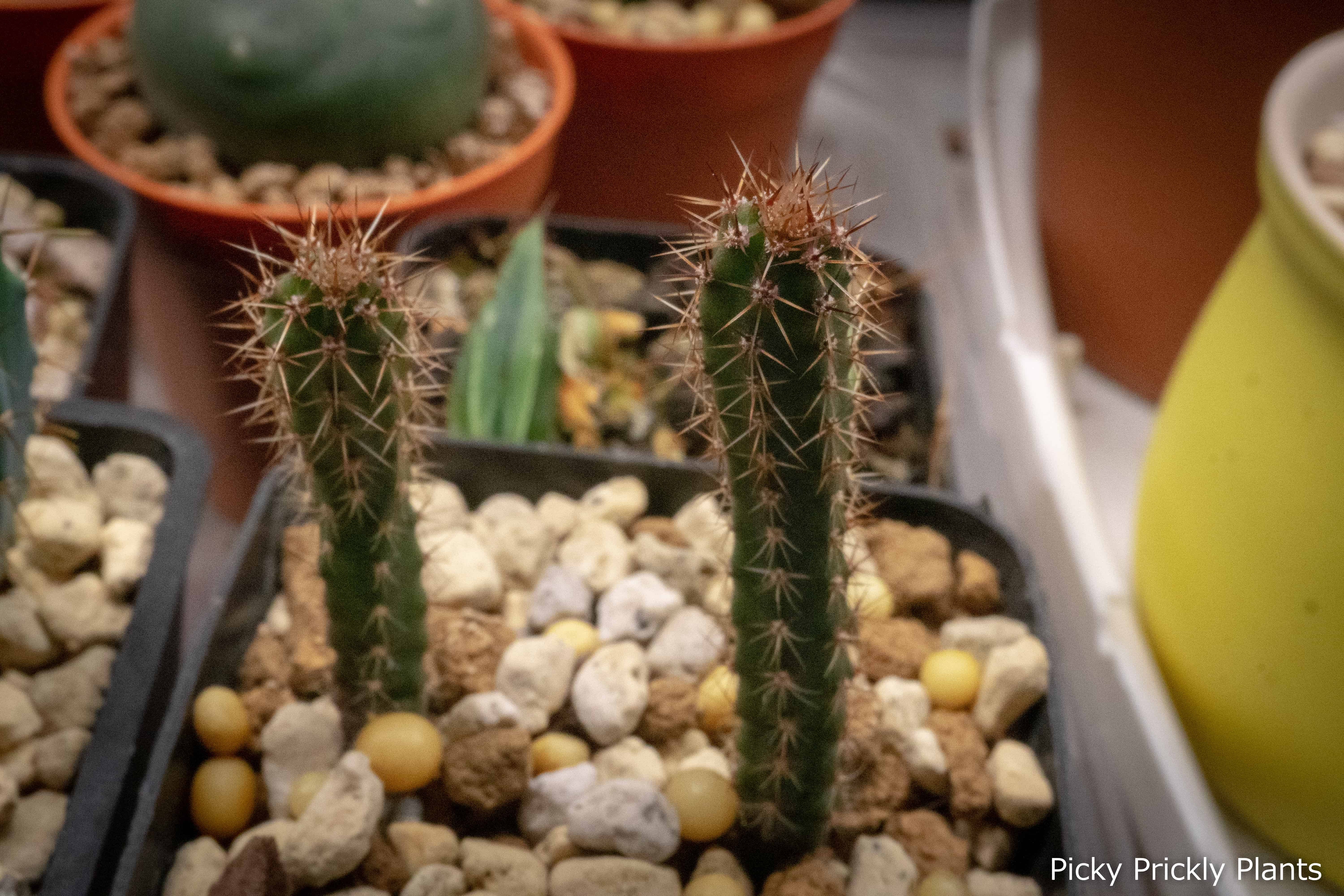

Find your perfect scion
I took another random two from my box of Astrophytums. They are both of perfect sizes and fit snuggly on the root stock. I didn’t use any pressure to keep them on the rootstock. All I did was to press down on the seedlings to squeeze out air bubbles that might create problems in the future.
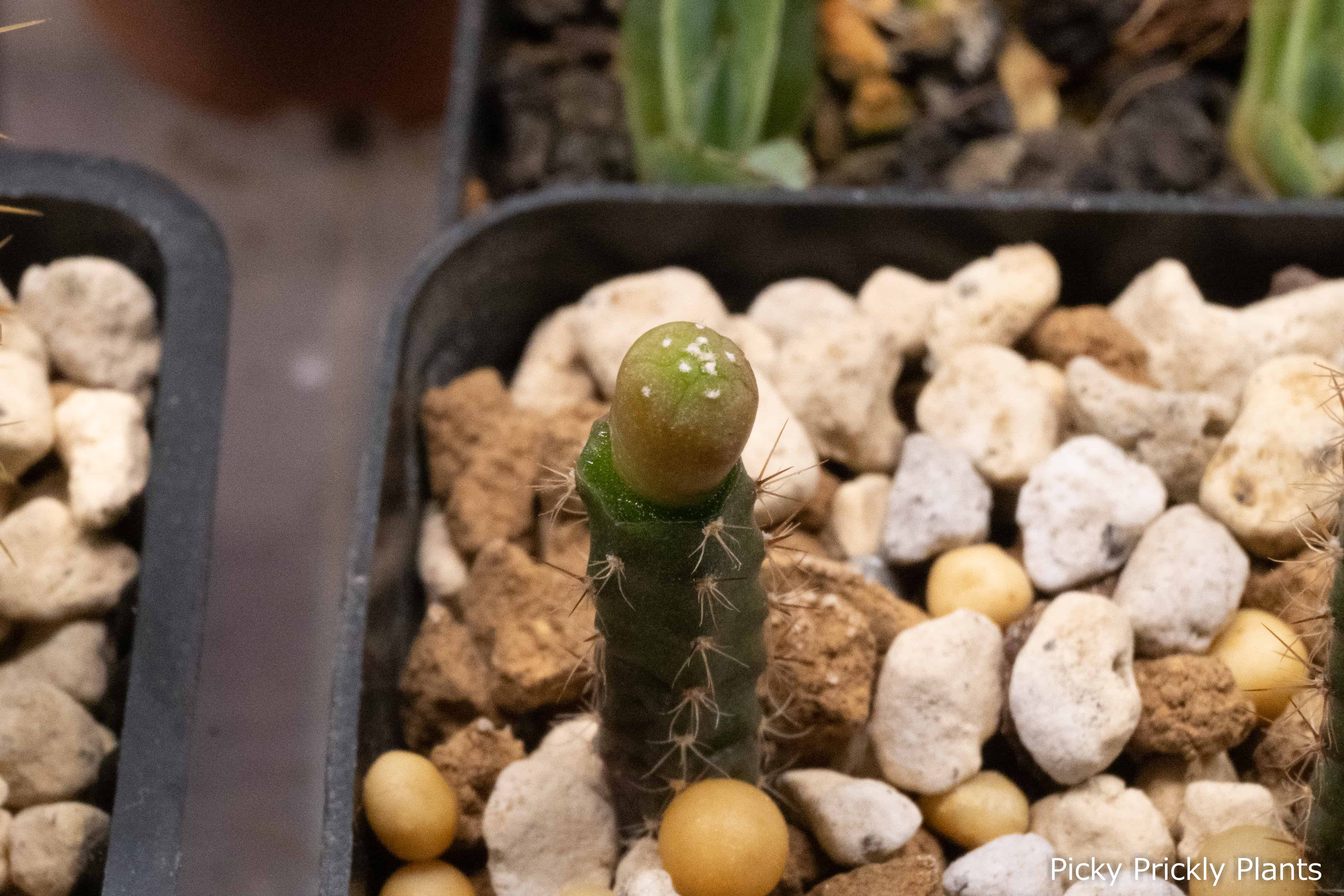
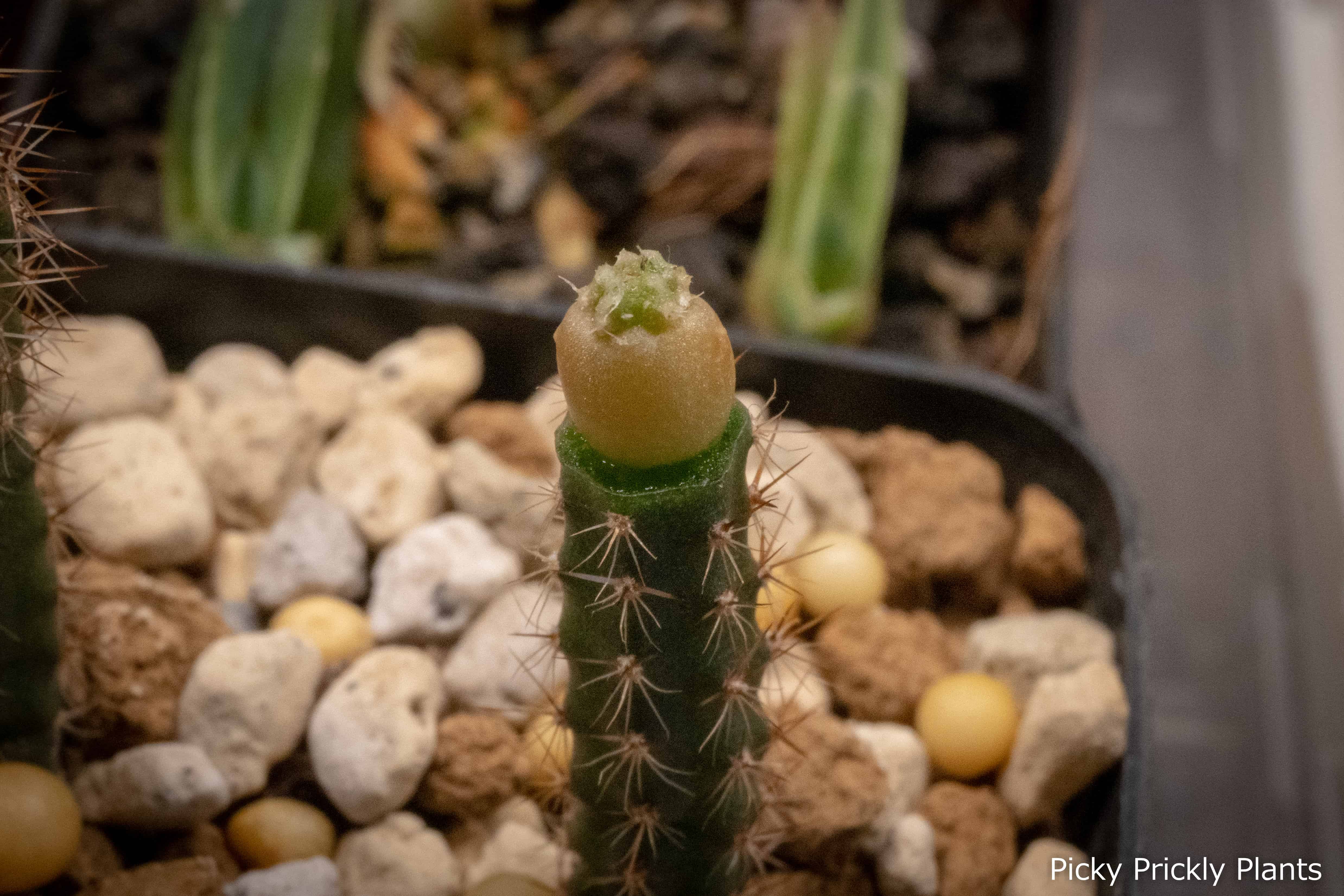
That’s all! I’ll document the progress here in a few weeks. Drop you email here and we will send you a message when we update. No spam, promise.

